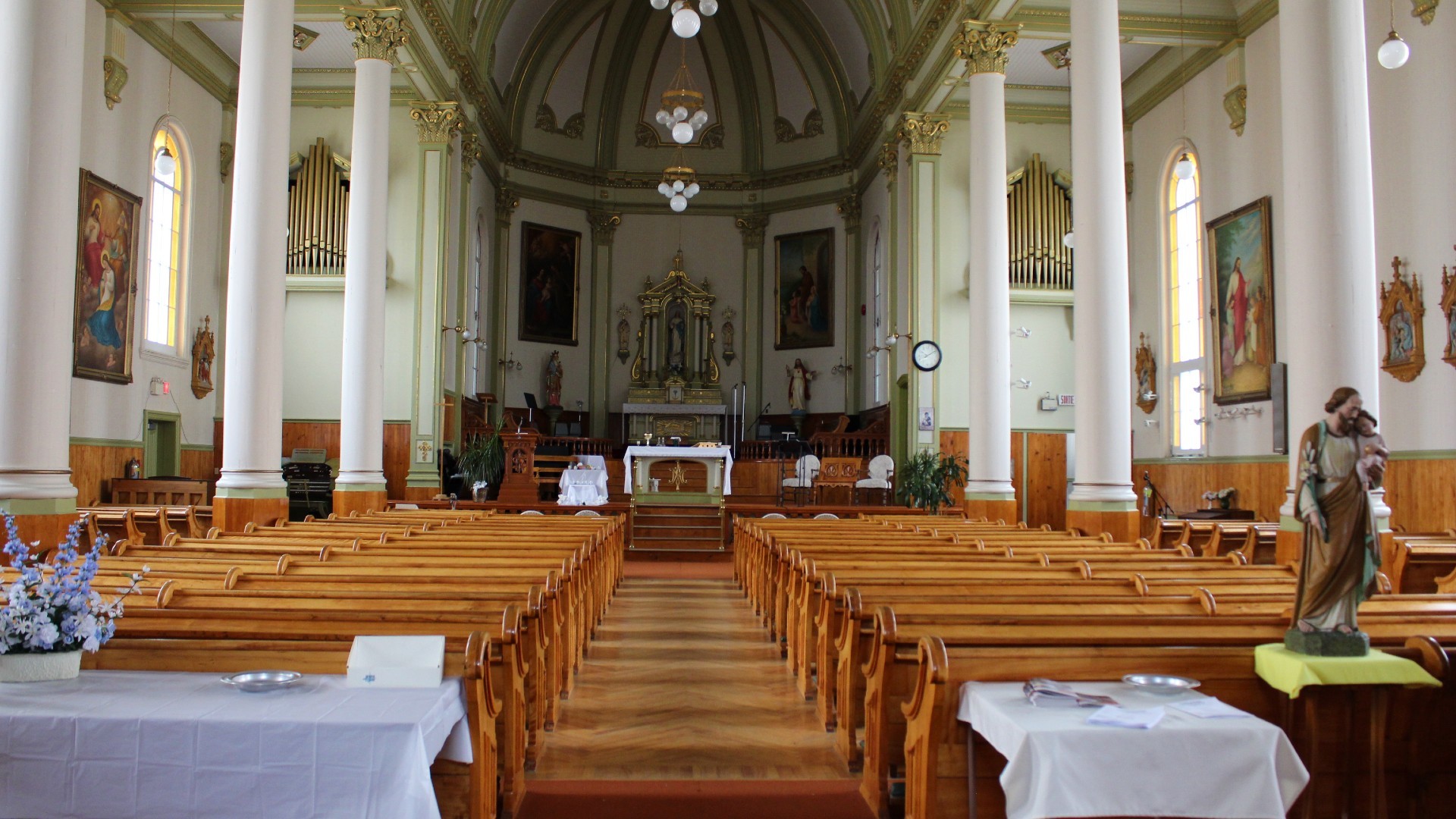A shortage of local priests
8 people
That’s how many men are studying to become priests at the Grand Séminaire de Québec, the province’s largest and oldest priest school and one of only two still running (the other being the Grand Séminaire de Montréal).
Ten years ago, there were 22 students registered at the seminary. In 1990, there were 49.

“The reality is we stopped getting candidates at all for the priesthood – whether for diocesan priest or for religious orders for the rest of Canada.”
— Paul André Durocher
Archbishop of the Gatineau diocese
Less and less Canadian men are interested in becoming priests. As a result, the number of candidates admitted in seminaries has plummeted.
This downward trend has been happening for about 15 years, according to Luc Paquet, rector of the Grand Séminaire de Québec. Paquet is in charge of the training program for priests and has held that position for five years.
Paquet was 18 years old when he started his studies at the school he now works at. There were 17 guys in his cohort. Now, 47 years later, there are only eight students in the entire school, all years combined. And it’s common for some of them to abandon their studies halfway through, he said.
This is a startling difference from 50 years ago when choosing to be a priest was still quite common, according to Durocher.
Then and now – Gatineau archbishop Paul André Durocher shares what it was like when he started his priesthood training in 1977.
Why are young men abandoning priesthood?
Today’s youth are eager to study, travel, or work after they finish high school. Not many are of them ready to commit to seven years of studies and a lifetime of celibacy and commitment to priesthood.
Celibacy in particular is difficult to accept for today’s young men because it “completely goes against the contemporary mindset where sexuality, if it isn’t expressed, it isn’t healthy,” Durocher said.
It also prevents married men who may otherwise have been very keen on the profession, and who usually have more life experience, from applying.
“The whole idea of saying at the age of 22 that, you know, ‘I’m going to be a priest, I’m committing myself to this way of life for the rest of my life’ is very very foreign in contemporary mindset.”
– Paul André Durocher
Archbishop of the Gatineau diocese
Ignace Ndongala, adjunct professor at the University of Montreal’s Institute of Religious Studies, said the celibacy requirement has further contributed to the shortage of local candidates.
Indeed, those choosing the religious vocation are older than they used to be, according Paquet. “When my cohort started, we were between 18 and 20 years old – while now those that get trained are between 25 and 35 years old.”
When Gaspé bishop Gaétan Proulx was a child, everyone in his community went to church. But now young families almost never go he said, so it’s very difficult for children and teenagers to feel connected to the religion. “You can’t discover your vocation [for priesthood] in that situation,” he said.
See also, “Quebec’s weakening Catholic adherence”
The fact that church attendance and adherence to Catholicism is also decreasing among younger adults is another key factor in the struggle to recruit new priests.
“The presence of youth at church is rarer and rarer, more and more minimal – so how do we reach young men?” said Paquet.
New ways to recruit
The Church is no longer allowed to recruit men in schools, and less young people attend mass. So the church had to get creative in the ways it reaches out to men.
The best place to reach potential priests is at major events organized by the Roman Catholic Church, such as meetings with the Pope, according to Paquet.
But it’s also done more informally by looking out for men that seem particularly involved in the church, Durocher said. Potential priests also have to show leadership qualities and a sense of balance. “We try to … be aware of the people who are in our parishes,” he explained.
Despite this shortage, the Catholic church still exists and so the need to find priests continues. And that’s why looking for priests outside of Canada became a popular fix.
See also, “A country of missionaries turned place of mission”
Top photo © Émilie Warren

